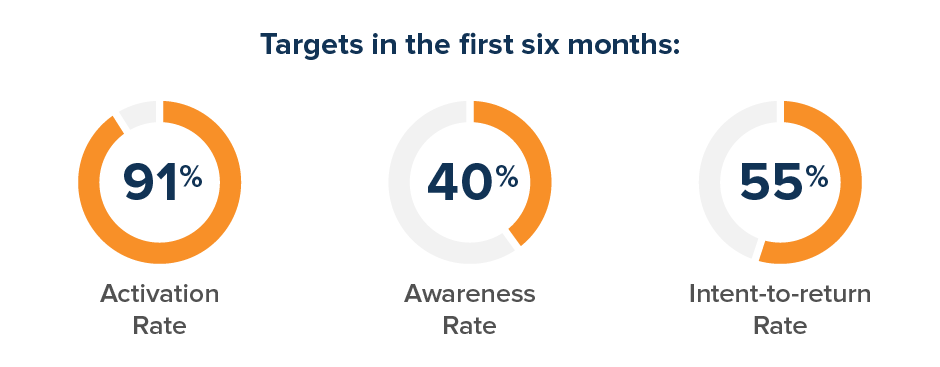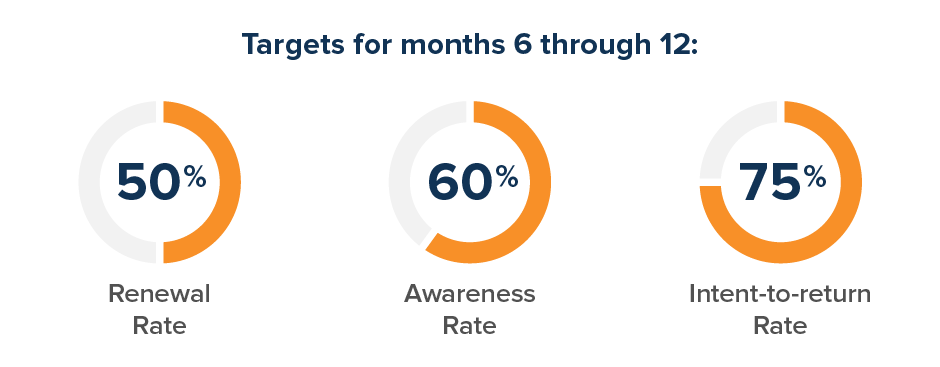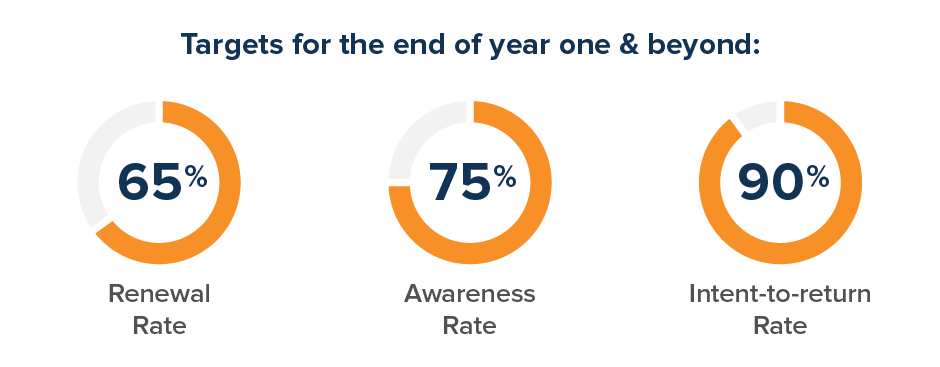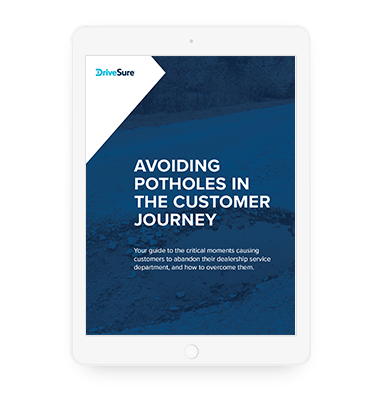When considering a new strategic initiative at your dealership, you’re likely assessing its potential value and return-on-investment from the start. How will this move the needle? When can you expect results?
These are fair questions, and most companies fall short in answering them. Instead of a detailed timeline of expected benefits, too many companies speak vaguely of polished value propositions that are short on details.
Your dealership deserves the details of an investment upfront – how bringing on a new product or service will benefit you, when it will benefit you, and benchmarks you should be hitting at given intervals.
That’s why we’re always transparent with what you can expect from DriveSure’s customer retention solution. Our suite of renewable benefits for vehicle owners provides a wide range of value for dealerships. Some of that value shows up right away, and some of it takes a little while to build.
Let’s explore what a new dealership can expect in their first year after implementing DriveSure, and beyond.
Prepare for the 5 make-or-break moments that can cause service customers to start going elsewhere.
Phase One: The Introduction (First Six Months)
Your first six months of working with DriveSure are all about communication, education, and creating a “wow factor” for your customers.
Phase One of Implementing DriveSure
Make sure your team understands how DriveSure benefits work, when they should be explained to customers, and how to educate customers on using the benefits and keeping them active. It’s key to have consistent messaging throughout the customer journey so every customer fully understands what they are getting with their scheduled maintenance service.
Speaking of messaging, you’ll also want to consider how you’re going to announce these new benefits. Because visit frequency varies, it makes sense to run an initial marketing campaign introducing DriveSure benefits to your entire customer base. That way, they have an additional incentive to return, and there’s more familiarity when they show up at the dealership.
Customers should be excited about the simplicity and overall value of their visit. From day one, you’re aiming for the response, “Wow, this is so much more than an oil change!” The same is true when customers visit your dealership for an unplanned repair. There should be a feeling of relief, gratitude, and value because of the DriveSure benefits your dealership now offers.
These interactions should start happening during the first month. You will begin to see your first claims for road hazard tire protection and roadside assistance, but benefit utilization may be lower at this phase. As time goes on and more customers have heard about these benefits, utilization rates will start to increase.
The Impact of Phase One
In addition to activation rates – which we define as the percentage of maintenance reminder stickers printed for customers purchasing a qualifying service – the metrics to keep an eye on in this phase include vehicle owner awareness and intent-to-return.
Awareness rates are compiled from a three-question survey embedded in the introductory DriveSure email the customer receives shortly after their maintenance visit. The customer is asked if they were aware their service came with DriveSure benefits. Intent-to-return rates are also taken from survey data where the customer is asked if having DriveSure benefits makes it more likely they will return to the dealership for their next scheduled maintenance service.
Your dealership should strive to hit the following benchmarks in the first six months:

Phase Two: Driving Renewals (Months 6-12)
After six months of working with DriveSure, your focus should shift to reinforcing the message and driving renewals.
Phase Two of Implementing DriveSure
Evaluate your communication and education approach so far by looking at the target metrics mentioned above. If you’re not seeing the expected customer response, we may need to refine the messaging and audit how the DriveSure benefits are being presented and communicated to customers.
Once you settle on the message and start reinforcing it throughout, it’s time to optimize the entire customer journey so you can drive return visits (and benefit renewals) as DriveSure benefit packages get close to expiring.
We refer to the strategies used here as “dealer-driven utilization opportunities.”
The prime example of these dealer-driven utilization opportunities is leveraging multi-point inspections with every service customer. Ensure these inspections are always completed. And once the inspections are complete, make sure your team members are checking to see if the customers have DriveSure benefits. That way, you can identify any tires on their vehicles that can be repaired or replaced under the DriveSure program if they have road hazard tire protection.
The Impact of Phase Two
DriveSure benefits last for 120-180 days, so you will start to see renewals happen between months four and six. You should also see an increase in awareness and intent-to-return rates as the value-added messaging starts to penetrate more of your customer base. This awareness and adoption, combined with dealer-driven utilization opportunities, means you’ll start to see a meaningful increase in tire claims as well.
A key highlight during phase two is roadside assistance utilization and what that means for your dealership.
Customer visits for unplanned repairs, specifically those who have been towed back to your dealership, will start to ramp up after the first six months of working with DriveSure. These customers who may have gone somewhere else return to your dealership instead because of dealer-loyal DriveSure towing. They’re brought back to you if it’s within 25 miles, even if it means driving by other dealerships to get there.

Phase Three: Maximizing Awareness (Year One & Beyond)
The full benefits of working with DriveSure become more obvious after year one is in the books.
Phase Three of Implementing DriveSure
You’re starting to see the value and ROI of DriveSure, but this phase doesn’t offer cruise control. It’s time to focus on maintaining and increasing your program’s success, especially given recent trends in the industry.
Intervals between regularly scheduled car maintenance are getting longer across the country, so dealerships need to double-down on their DriveSure communications to help protect service visit frequency. As your team aims to maximize awareness, consider the entire customer experience and how you can work through common retention roadblocks like expiration of factory-paid maintenance, expiration of factory warranty, tire replacement, and unplanned repairs.
With every team member dedicated to improving the customer experience and communicating your DriveSure benefits, you will continue to see a noticeable difference in visit frequency beyond the first year.
The Impact of Phase Three
Once you’ve entered the awareness phase, you may start to see signs that DriveSure is now part of your dealership’s culture. This comes in the form of inbound calls from customers expressing the desire to get in for service so they don’t “lose” their benefits. It becomes even more apparent when customers ask for DriveSure by name. This means your customers understand the value you’ve given them and associate that value with you, their dealer.
By this stage in your dealership’s DriveSure experience, frequency of visit is the metric that likely stands out the most. Your customers’ urgency to return for service on time is much higher because their benefits expire on a specific date. We typically see these improvements in frequency of visit after the first 12-15 months, with customers returning to the dealership 22 days sooner on average.
In addition to measurable changes in visit frequency, you should also see steady increases in renewal, awareness and intent-to-return rates. After your first 12-15 months of working with us, your dealership will be well-positioned to remain your customers’ go-to provider for maintenance, tires, and repairs. Beyond targeting the benchmarks below, consider strategies for leveraging DriveSure to increase tire sales and capture market share from the competition.

Delighting your customers right now is challenging enough, so having a vision for your first year of working with us should relieve some pressure (for you and your customers). Bookmark these objectives for each phase of DriveSure implementation. Revisit and refine them throughout the year so you and your customers can get the most out of DriveSure.
Now that we’ve covered part of your journey, read our guide on avoiding potholes in your customer journey to make sure they keep coming back.
Master These Moments to Keep Your Customers
Discover the 5 critical moments causing customers to abandon your dealership service department, and how you can overcome them.


